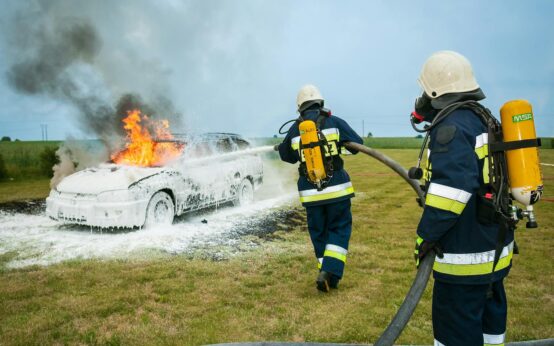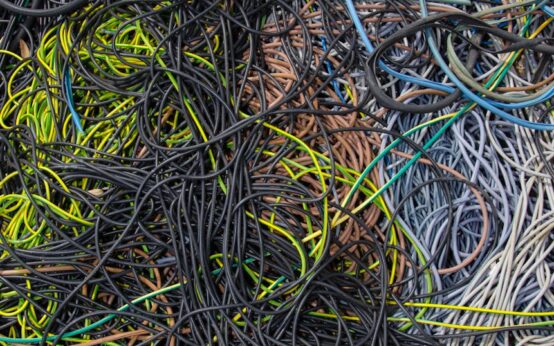A Guide to Geo-engineering: Can We Hack the Planet?
We’re in a tough spot. The planet is warming, ice caps are melting, and extreme weather is becoming the new normal. We’re doing our best to cut emissions, switch to renewables, and plant trees, but what if it’s not enough? What if we’re running out of time? This is where a controversial, high-stakes, and frankly terrifying idea enters the room: geo-engineering. The concept is simple, yet mind-bogglingly complex. It’s the idea that we could intentionally manipulate Earth’s climate systems to counteract the effects of global warming. Hacking the planet, essentially. This geo-engineering guide is your deep dive into a world that straddles the line between a brilliant solution and a catastrophic mistake. Are we talking about a silver bullet for climate change, or are we about to open Pandora’s box?
Key Takeaways
- Two Main Approaches: Geo-engineering is broadly split into two categories: Carbon Dioxide Removal (CDR), which sucks CO2 from the air, and Solar Radiation Management (SRM), which reflects sunlight back into space.
- High Risk, High Reward: While some methods like reforestation are relatively safe, others, particularly in SRM, carry immense risks of unintended consequences like disrupting weather patterns.
- Not a Substitute: Most scientists agree that geo-engineering should be seen as a potential emergency measure, not a replacement for drastically cutting greenhouse gas emissions.
- The Governance Nightmare: A major hurdle is the question of who gets to control the Earth’s thermostat. The potential for international conflict is enormous.
So, What Is Geo-engineering, Really?
Let’s clear the air. When people talk about geo-engineering, they aren’t talking about your standard recycling program. This is large-scale, planetary intervention. The term itself is a massive umbrella covering a whole host of different technologies and ideas, some of which are already happening on a small scale, and others that are purely theoretical, existing only on whiteboards and in supercomputer simulations.
Think of the Earth’s climate like a complex system with a few key control knobs. For the last couple of centuries, we’ve been cranking up the “Greenhouse Gas” knob without really understanding the consequences. Now, the room is getting uncomfortably hot. Geo-engineering proposes two ways to fix this:
- Turn down the heat source. This is Solar Radiation Management (SRM). It’s a bit like putting a giant parasol over the Earth to block some of the incoming sunlight. It’s a fast-acting fix, but it doesn’t solve the underlying problem of too much CO2.
- Ventilate the room. This is Carbon Dioxide Removal (CDR). It’s about actively pulling all that excess CO2 we’ve pumped out back out of the atmosphere. It’s a slower, more direct solution to the root cause.
These two approaches are worlds apart in terms of risk, technology, and philosophy. One is a quick fix with potentially terrifying side effects; the other is a long, slow cleanup job. Let’s break them down.
Category 1: Cleaning Up the Mess with Carbon Dioxide Removal (CDR)
CDR techniques are all about tackling the root cause of climate change: the staggering amount of carbon dioxide in our atmosphere. They’re essentially trying to reverse the industrial revolution’s atmospheric legacy. It’s less about a planetary ‘hack’ and more about a planetary ‘cleanup’.

Afforestation and Reforestation
This is the most natural and well-understood form of CDR. It’s simple: plant more trees. Forests are the planet’s original carbon-sucking machines. They breathe in CO2 and store it in their trunks, leaves, and the soil. Reforestation means replanting areas that were once forests, while afforestation is planting new forests where there weren’t any before. It’s relatively cheap, has numerous co-benefits like improving biodiversity and soil quality, and faces little public opposition. Who doesn’t like trees? But here’s the catch: it requires an immense amount of land, and the carbon is only stored as long as the forest remains standing. A forest fire can release all that stored carbon right back into the atmosphere.
Bioenergy with Carbon Capture and Storage (BECCS)
This one’s a bit more industrial. Imagine growing crops or trees that absorb CO2. Then, you harvest that biomass and burn it in a power plant to generate electricity. So far, so normal. But here’s the twist: you capture the CO2 released during combustion before it reaches the atmosphere and then pump it deep underground into geological formations for permanent storage. In theory, this is a ‘carbon-negative’ process. You’re generating power while actively removing CO2. The problem? BECCS would require astronomical amounts of land to grow the biomass, potentially competing with food production and destroying natural habitats. It’s a logistical and ethical minefield.
Direct Air Capture (DAC)
Think of giant machines with massive fans that act like artificial trees. These DAC facilities pull ambient air through a series of chemical filters that specifically bind with CO2 molecules. Once captured, the CO2 can be stored underground or even used to create products like synthetic fuels or carbonated drinks. It sounds perfect, right? We can just build these machines anywhere. The massive hurdle is energy and cost. Separating CO2 from the air is incredibly energy-intensive. Right now, it’s a very expensive way to remove carbon, but a lot of smart people are working to bring the cost down. It’s a technology with huge potential if we can crack the efficiency problem.
Ocean Fertilization
The ocean is the world’s biggest carbon sink. This idea aims to give it a boost. The concept involves seeding parts of the ocean, typically those low in nutrients, with iron dust. This stimulates a massive bloom of phytoplankton—microscopic marine plants. Just like trees, these phytoplankton absorb CO2 through photosynthesis. When they die, they sink to the deep ocean, theoretically taking the carbon with them. Early experiments have had mixed results, and the risks are huge. We could fundamentally alter marine ecosystems, create oxygen-depleted ‘dead zones’, and trigger harmful algal blooms. Messing with the ocean’s food web is a gamble most scientists are, rightly, very nervous about.
Category 2: The Sunshade Solution with Solar Radiation Management (SRM)
If CDR is the slow, steady cleanup, SRM is the emergency brake. These methods don’t remove CO2; they just treat the primary symptom, which is warming. They aim to reflect a tiny fraction (around 1-2%) of incoming sunlight back into space, which would be enough to cool the planet and offset the warming caused by our greenhouse gas emissions. It’s fast, relatively cheap, and incredibly risky.
Stratospheric Aerosol Injection (SAI)
This is the one you’ve probably heard about. It’s the idea that gets the most attention and causes the most alarm. The plan is to mimic a large volcanic eruption. When a volcano like Mount Pinatubo erupted in 1991, it shot millions of tons of sulfur dioxide into the stratosphere. This formed a haze of sulfate aerosols that reflected sunlight and cooled the planet by about 0.5°C for over a year. SAI proposes doing this deliberately, using a fleet of high-altitude aircraft or balloons to continuously release reflective particles into the stratosphere. It’s shockingly plausible from an engineering standpoint and surprisingly cheap compared to the cost of transitioning our entire energy system. But the potential side effects are the stuff of nightmares. It could damage the ozone layer, alter global rainfall patterns (potentially causing droughts in some regions and floods in others), and would do nothing to stop ocean acidification, another major problem caused by excess CO2.

Marine Cloud Brightening
This is a more localized approach. It involves spraying a fine mist of seawater into the air over the oceans from a fleet of unmanned ships. The salt crystals act as ‘cloud condensation nuclei’, helping to form more numerous, smaller water droplets. This makes the clouds whiter and more reflective, bouncing more sunlight back to space. It’s thought to be more controllable than SAI, allowing for regional cooling, perhaps to protect a specific ecosystem like the Great Barrier Reef. Still, the science is young. We don’t know what this might do to weather patterns downwind. Could protecting a reef in Australia inadvertently cause a drought in South America? We just don’t know.
Space-based Mirrors
Now we’re really in sci-fi territory. This concept involves placing giant mirrors or a fleet of millions of small, reflective spacecraft into orbit to block a small percentage of sunlight before it even reaches Earth. The technological and financial hurdles are, for now, insurmountable. We’re talking about the single most ambitious engineering project in human history. While it avoids directly meddling with the atmosphere, the cost would be astronomical, and the logistics of maintaining such a system are mind-boggling.
The Big Debate: A Geo-engineering Guide to the Risks and Ethics
The science is one thing. The ethics, politics, and risks are another. This isn’t just a technical problem; it’s a deeply human one. The potential for unintended consequences is the elephant in every room where geo-engineering is discussed.
“The problem with geo-engineering is not that we don’t know how to do it. The problem is we don’t know what we’re doing. We are talking about changing the fundamental operating system of the planet without a user manual.”
The ‘Termination Shock’ Problem
This is perhaps the scariest risk associated with SRM. Imagine we deploy a fleet of planes to spray aerosols for 50 years. The planet’s temperature stabilizes. We feel safe. But all that time, CO2 levels have continued to rise in the background. If we were to suddenly stop the aerosol program—due to war, political disagreement, or economic collapse—the decades of masked warming would hit the planet all at once. The resulting temperature spike would be so rapid and catastrophic that ecosystems and human society would have no time to adapt. It would be an unprecedented global shock.
Unintended Consequences
We live on a single, interconnected planet. You can’t just change the climate in one place without it having knock-on effects elsewhere. The computer models are good, but they’re not perfect. SAI, for example, could weaken the Indian and African summer monsoons, which billions of people rely on for agriculture. Who is liable for that damage? Who do you sue? There are no easy answers.
Who Gets to Control the Thermostat?
This is the geopolitical nightmare. Who decides what the ideal global temperature is? Russia might prefer a slightly warmer world, while a low-lying island nation would want it much cooler. Because some SRM technologies are relatively cheap, there’s a real fear of a single nation or even a wealthy individual ‘going rogue’ and deploying it unilaterally. This could easily lead to international conflict—a ‘climate war’ is not out of the realm of possibility. We have no international treaties or governance structures to manage this kind of technology. It’s the Wild West, but on a planetary scale.
Conclusion: A Fork in the Road
So, can we hack the planet? The answer seems to be a tentative, and very nervous, yes. The technology is either here or on the horizon. But the real question isn’t ‘can we?’, it’s ‘should we?’.
Geo-engineering is not a get-out-of-jail-free card. It’s a planetary-scale medical intervention with a long list of potential side effects, some of which could be worse than the disease itself. The safer CDR methods are slow and expensive, while the faster SRM methods are fraught with peril. Most experts agree that our absolute, number one priority must remain cutting emissions as fast as humanly possible. Geo-engineering, if it’s ever to be used, should be a last resort—a desperate measure for a desperate time, researched with extreme caution and managed with global cooperation that we have never before achieved.
We are the first generation to have the power to consciously alter our planet’s climate. The responsibility is immense. As we stand at this fork in the road, we have to decide if we’re wise enough to wield that power, or if we’re just children playing with matches in a world made of tinder.



 Software is Eating the World: A Deep Dive Analysis
Software is Eating the World: A Deep Dive Analysis  How Tech is Revolutionizing Disaster Response
How Tech is Revolutionizing Disaster Response  AI and the Future of Search Engines: What’s Next?
AI and the Future of Search Engines: What’s Next?  How Technology is Changing Sports: A New Era
How Technology is Changing Sports: A New Era  The Tech Behind High-Frequency Trading Explained (2024)
The Tech Behind High-Frequency Trading Explained (2024)  What is Computational Photography? The Ultimate Guide
What is Computational Photography? The Ultimate Guide  Dynamic NFTs: The Evolving Future of Digital Assets
Dynamic NFTs: The Evolving Future of Digital Assets  How Macroeconomics Drives the Crypto Market (2024 Guide)
How Macroeconomics Drives the Crypto Market (2024 Guide)  How to Set Up a Node: The Ultimate Guide
How to Set Up a Node: The Ultimate Guide  Crypto Arbitrage Trading: A Beginner’s Guide (2024)
Crypto Arbitrage Trading: A Beginner’s Guide (2024)  The Business of NFTs: How Top Brands Are Using Them
The Business of NFTs: How Top Brands Are Using Them  What Are ZK-Proofs? A Guide to Blockchain Privacy
What Are ZK-Proofs? A Guide to Blockchain Privacy